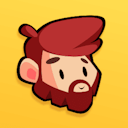Telling a Story - Module overview
Nathan
Founder and teacher at GDQuest
A quick refresher on arrays and dictionaries


What you'll learn in this module
- Control nodes: There are two ways to position UI elements in Godot, and you can combine them to build any interface.
- The Label node: It will allow you to display and animate text to appear letter by letter.
- The AudioStreamPlayer node: You will use it to load and play sounds.
- Arrays: You will store lines of text and display them in order in a dialogue system.
- Dictionaries: You will map the names of character expressions to their corresponding images.
- Dictionaries inside arrays: You will learn how to combine them to build more complex data structures.
- Theming: You will style and customize your UI using Godot's UI theme feature.
- Iterative design: You will learn how to start with a simple structure and change it in little increments until you get all the features you need.
Download the project files
Files not accessible
Looks like you don't own this course. Get it now.
Open and review the workbook for this module
Nathan
Founder and teacher at GDQuest

- You will use the bubble_pattern.png and sliding_background.gdshader files to create the background of your scene.
- pink.png and sophia.png are two character portraits without any expression or facial feature. This is so you can add facial expressions to them.
- emotion_happy.png, emotion_regular.png, and emotion_sad.png are facial expressions to layer on top of the Sophia and Pink sprites.
- talking_synth.ogg is the sound (in ogg format) you'll play when a character speaks. It's a CC-By-Sa licensed sound made by tcarisland. The license is in talking_synth.license.txt.
- Finally, test.svg is a test image you will use as a backdrop guide to learn more about Control nodes and Godot's UI anchor system.


Lesson Q&A
Use this space for questions related to what you're learning. For any other type of support (website, learning platform, payments, etc...) please get in touch using the contact form.